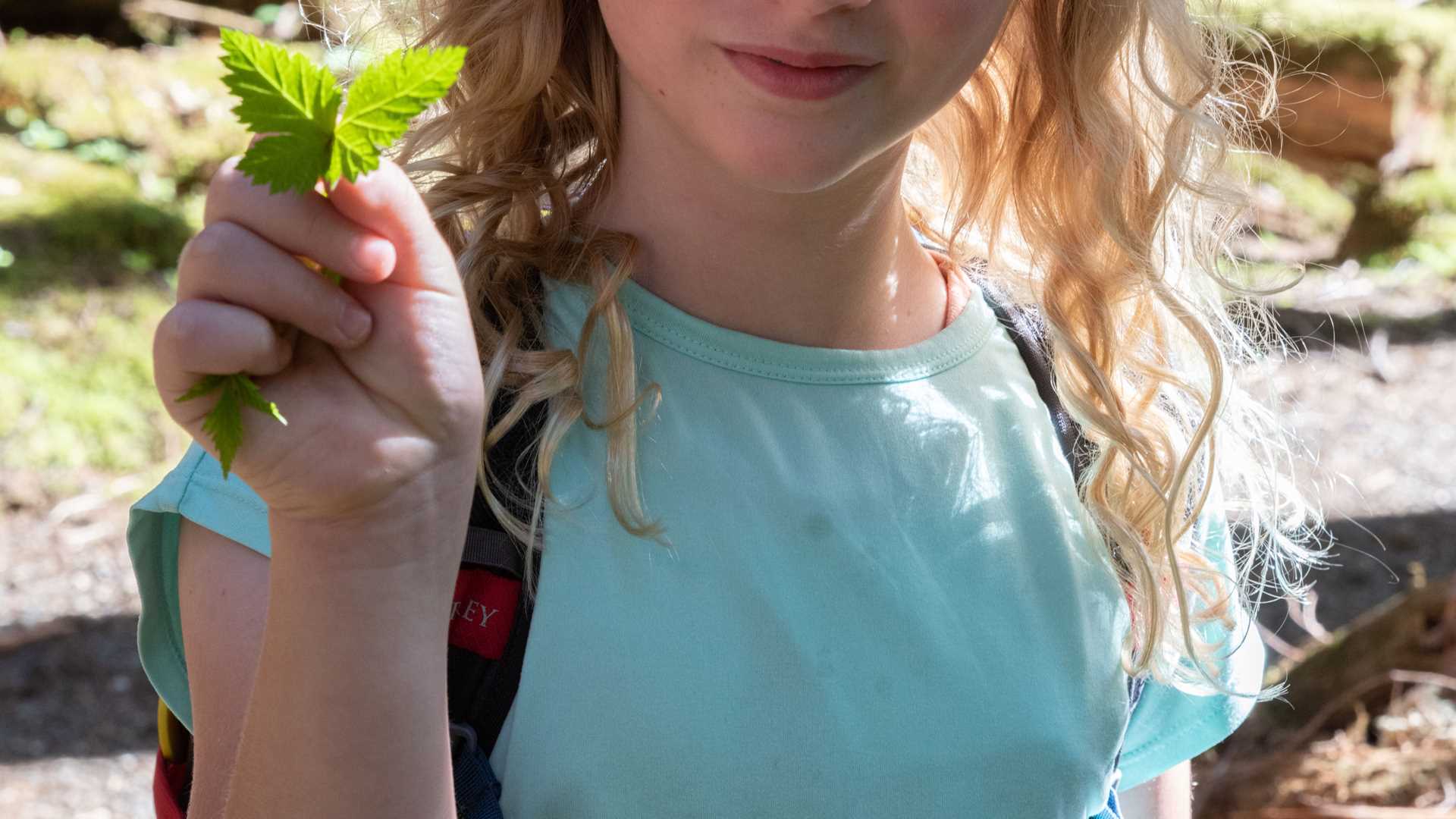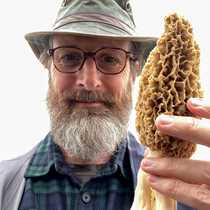On either side of the trail, in shaded pockets at the base of trees, familiar faces peer up at us. Each little face is composed of four white bracts—petal-like leaves—arranged in the shape of a cross, surrounding a cluster of anywhere from a half dozen to twenty-five tiny flowers. Each little flower contains four petals, four stamens, and four sepals. Beneath the four white bracts are four green leaves. To the casual observer, each cluster of blooms appears to be one flower.
As summer rolls on, the bracts will wither, and the flowers will produce a cluster of red berries. Hardly delectable, and each containing a single, small seed at its center, the berries, as well as the flowers, bracts, and leaves, are nevertheless edible, and I occasionally snack on them, though I have never seen anybody else choosing to eat them. There are plenty of other, more delicious fruits in the Southeast Alaska mountains—blueberries, salmonberries, thimbleberries…
𝑪𝒐𝒓𝒏𝒖𝒔 𝒄𝒂𝒏𝒂𝒅𝒆𝒏𝒔𝒊𝒔, commonly called dwarf dogwood, bunch berry, or creeping dogwood can be found throughout most of Canada, and much of the northern half of the contiguous United States, yet when I see the white bracts appear on the forest floor in Alaska, I am transported to the opposite end of the continent, where its closest relative is found: 𝑪𝒐𝒓𝒏𝒖𝒔 𝒇𝒍𝒐𝒓𝒊𝒅𝒂—the flowering dogwood tree.
Never mind that one flower creeps on the ground, while the other lights up the mid canopy. In the same way that once you see Donny Osmond, you will instantly recognize Jimmy, once you get to know the flowering dogwood tree, you cannot mistake its northern doppelgänger for anything other than a close relative.
* * *
In 1914, Lord Baden-Powell started the Rosebud scouting program. One year later, Baden-Powell’s wife, Lady Olave Baden-Powell, took over and renamed the Rosebuds, Brownies. The new name for this new scouting program was taken from a story published in 1870 called “The Brownies,” by Juliana Horatio Ewing. In the story, two young siblings were lovingly tricked into seeing themselves differently, changing them from mischievous and malevolent boggarts into helpful and boosterish “Brownies.”
According to Cherokee lore, a tiny people live in the forest among the dogwood trees. These wee folk are a divine race, devoted to teaching the Cherokee how to live in harmony with all that is around them. This they do by protecting all those who are vulnerable—the ill, the very young, the old, the infirm. The Dogwood People exist in different colors—black, white, and as the Cherokee saw themselves, golden. Sometimes they speak the Cherokee language, other times they speak their own. But whatever the language, whatever the skin tone, they are devoted to The Golden Rule. I have been unsuccessful in finding the original Cherokee word for the dogwood people, but as they learned and adopted English, they began calling these Good Samaritans, Brownies––the wee folk of the dogwood.
I don’t know if the Tlingit people of Southeast Alaska have similar lore about their tiny, ground-hugging dogwood, but whenever I see these lovely little flowers, I can’t help imagining tiny magical folks in a rainbow of colors, coming from their midst when nobody is looking, doing good deeds, and being an example to us all.







